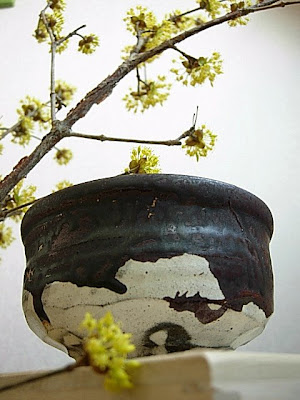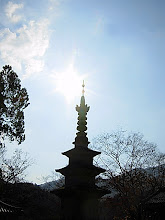The word is out, there are two kinds of matcha.
Posts on Tea Nerd and Another Tea Blog cover the topic briefly, those who haven't read them should do so.
Nevertheless, we will re investigate this topic in a little more detail.
The tea used for matcha undergoes a special method of production that requires the tea plants to be shade grown for the last few weeks before it is picked. At this time, the bushes are covered by a bamboo sheet that only allows a small amount of the sunlight to pass through to the tea bushes. This is a very important part of producing matcha because it encourages the production of chlorophyll in young leaves.
The high levels of chlorophyll in small new shoots gives matcha its famous bright green colour. In most teas chlorophyll levels increase as the leaves mature, but with maturity, taste is compromised.
Shading also decreases the number of catechins in new shoots. Because catechins give tea its astringency and bitter qualities, shading decreases these qualities, it mellows out the harsh edges of the raw tea leaf resulting in a smoother, less harsh, more palatable matcha. So, essentially shading is an attempt at getting the most flavor out of young nutrient rich leaves.
The maturity of the leaves and the location of them on the bush is an important factor in determining the quality of matcha. It has been well know for quite some time now that the young shoots of tea at the top of the bush contain the highest concentration of catechins. These young leaves are also softer and more vibrant than their mature neighbours. They are the most coveted throughout the world and are specially selected for matcha. The older thicker, duller, and less supple neighbouring leaves are also picked.
These leaves are then rolled, dried, deveined, destemmed, and stone ground into a fine powder. In Japan, almost all of these steps take place with the help of intricate machines, very little manpower is needed. It is almost hypnotizing to see these wonderfully functional inventions work their magic (See video from O'cha, it's the 2nd one down) .
After the tea is ground into a fine powder it is put into a final machine before being packaged. This last machine is like a little wind tunnel with a powerful fan on one end. The powdered tea is put through the fan, launching it across the wind tunnel.
The most sought after matcha is launched furthest from the fan. This quality matcha is carried the furthest because it is characteristically light, soft, supple. Like the fluffy snow produced in cool temperatures, it tends to blow further. Not only is this matcha the lightest it is also the brightest green because only the powder of young leaves exhibit these qualities. This bright green powder is also only produced from the middle of these young leaves, the tenderest part of the leaf.
Conversely the matcha that travels the shortest distance from the fan is lower quality matcha. This powder is hard and sandy. Like the icy, grainy snow produced in the frigid arctic, it doesn't blow so far. Its colour is a less vibrant, muddled, darker green. This darker powder comes from the young leaf's more mature neighbours and is the powder produced from the harder areas located around the outer edges of the leaf.
Matcha is then divided into different grades of quality. The soft, bright green powder furthest from the fan is reserved for thick tea (Kor: Nong cha, Jap: Koicha). The harder, darker green powder closest to the fan is reserved for food grade matcha or perhaps for thin tea (Kor: Bach cha, Jap: Usucha). The producers of matcha subjectively decide where to draw the line in the sand or, in this case, the line in the matcha that separates thin tea from thick tea in the wind tunnel. There is no industry standard or test to separate the grades of tea, so really, the divisions are somewhat arbitrary or artificial (see previous post).
Most producers also ofter more than just two grades of matcha. In these processing plants, the settled powder in the wind tunnel is divided into three, four, five sections. How many divisions and the location of the divisions in the wind tunnel depends entirely on the producer.
Before consumption these different grades of matcha should display some of the somewhat pronounced characteristics of their grade. When thin tea is prepared it should be more watery and have a thiner, lighter layer of frothy head. Its taste should also exhibit more astringency and bitterness. Conversely, thick tea should have a thick syrupy consistency, with a much larger and thicker frothy head. Its taste should exhibit more sweetness. Because of these qualities, not as much thin tea can be used during its preparation before the an unpleasant bitterness can be tasted. On the other hand, more thick tea can be added because it is much more sweet and much less bitter. When preparing thick tea you can really 'lay it on thick'.
In the next week or so expect to see a review of four different grades of matcha from the same producer produced at the same time. This post will shed some more light on this subject.
Until then,
Peace
22 hours ago























